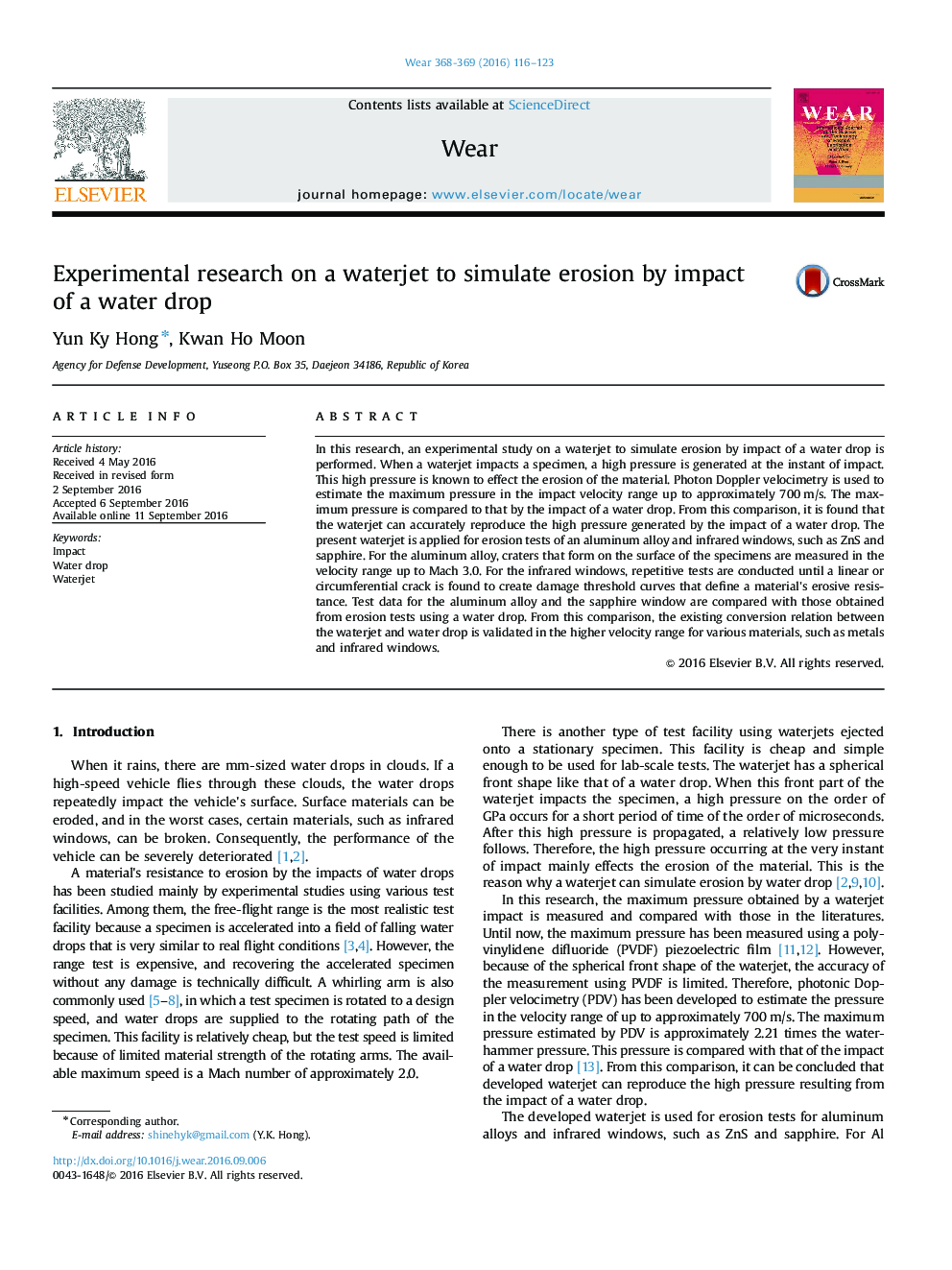| Article ID | Journal | Published Year | Pages | File Type |
|---|---|---|---|---|
| 4986888 | Wear | 2016 | 8 Pages |
Abstract
In this research, an experimental study on a waterjet to simulate erosion by impact of a water drop is performed. When a waterjet impacts a specimen, a high pressure is generated at the instant of impact. This high pressure is known to effect the erosion of the material. Photon Doppler velocimetry is used to estimate the maximum pressure in the impact velocity range up to approximately 700 m/s. The maximum pressure is compared to that by the impact of a water drop. From this comparison, it is found that the waterjet can accurately reproduce the high pressure generated by the impact of a water drop. The present waterjet is applied for erosion tests of an aluminum alloy and infrared windows, such as ZnS and sapphire. For the aluminum alloy, craters that form on the surface of the specimens are measured in the velocity range up to Mach 3.0. For the infrared windows, repetitive tests are conducted until a linear or circumferential crack is found to create damage threshold curves that define a material׳s erosive resistance. Test data for the aluminum alloy and the sapphire window are compared with those obtained from erosion tests using a water drop. From this comparison, the existing conversion relation between the waterjet and water drop is validated in the higher velocity range for various materials, such as metals and infrared windows.
Keywords
Related Topics
Physical Sciences and Engineering
Chemical Engineering
Colloid and Surface Chemistry
Authors
Yun Ky Hong, Kwan Ho Moon,
